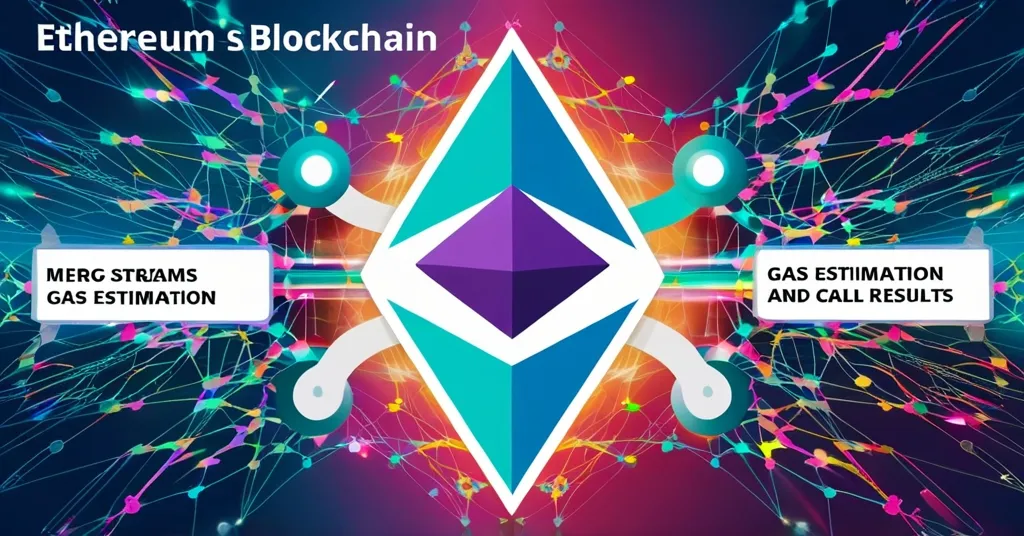Ethereum Proposes Merging Gas Estimation and Call Results for Enhanced Efficiency

Ethereum Developers Propose Merging Gas Estimation and Call Results: A Step Towards Efficiency
Ethereum developers are proposing a significant change to streamline transactions by merging gas estimation and call results. This could potentially reduce delays and improve cost-effectiveness, addressing some of the platform’s most persistent inefficiencies.
- Merging gas estimation and call results to streamline Ethereum transactions.
- Proposed versioning system to manage changes: V1, V2, V3.
- Debate within the Ethereum community on the timing and necessity of these updates.
- Potential benefits include reduced network congestion and faster transaction processing.
Understanding Gas Estimation
Gas estimation, which is how Ethereum measures the computational effort needed for transactions, is crucial for ensuring that transactions don’t run out of gas mid-execution, which would result in failure and wasted effort. For the uninitiated, think of gas as the fuel that powers your car; without enough, you’re stuck on the side of the road. Ethereum’s gas mechanism is designed to prevent network abuse by requiring users to pay for computational resources. The current challenges with gas estimation stem from complex rules like the 1/64 rule for nested calls, leading to discrepancies between estimated and actual gas usage.
The Proposal in Detail
The proposed change aims to merge gas estimation and call results into a single operation, eliminating the need for separate calls. This could lower delays and align gas estimates more closely with actual usage. The proposal includes a versioning system to manage these changes smoothly:
- V1: The current standard where gas estimation and call results are handled separately.
- V2: Introduction of the combined operation with backward compatibility, ensuring existing systems aren’t disrupted.
- V3: Further refinement based on feedback and adoption, potentially optimizing the combined operation even further.
Imagine if you could fill up your car with gas and immediately know how far you can go without the guesswork. That’s the kind of efficiency Ethereum developers are aiming for with this proposal.
Community Response
There’s a lively debate within the Ethereum community about the timing and necessity of these changes. Some argue for a more conservative approach, wary of adding complexity, while others see the urgent need to address the growing pain points in the current system. As one developer put it, “We need to move fast to keep up with the demands of our users, but we can’t afford to break what’s already working.”
Expected Benefits
Reducing redundant calls can significantly decrease network congestion, leading to faster and more reliable transaction processing. For users, this means less time waiting for transactions to complete and potentially lower transaction costs. Imagine sending funds across the globe in seconds instead of minutes, without breaking the bank on gas fees. That’s the future Ethereum is working towards with transaction efficiency improvements.
Key Questions and Takeaways
- What is the purpose of combining gas estimation and call results in Ethereum?
The purpose is to enhance efficiency by reducing the need for separate calls, lowering delay and aligning gas estimates with actual usage.
- What is the proposed versioning system for managing these changes?
The proposed versioning system includes V1 (current standard), V2 (introducing combined operation with backward compatibility), and V3 (future refinements based on feedback).
- Why is there debate within the Ethereum community about these changes?
The debate centers on the timing and necessity, with some favoring a conservative approach to avoid complexity, while others advocate for quick iterations.
- What are the expected benefits of reducing redundant calls in Ethereum?
Decreased network congestion, leading to faster and more reliable transaction processing.
While we’re all for decentralization and the disruptive power of blockchain, it’s important to approach these changes with both optimism and a critical eye. Ethereum’s journey towards greater efficiency is exciting, but it’s equally crucial to consider the potential pitfalls and ensure that these advancements truly serve the broader community, not just a select few.
As we continue to champion the ideals of freedom, privacy, and effective accelerationism (e/acc), it’s clear that Ethereum, alongside Bitcoin and other innovative protocols, plays a pivotal role in this financial revolution. Each blockchain has its niche, and Ethereum’s focus on smart contracts and decentralized applications is a testament to the diversity that makes the crypto space so vibrant.
Continuous innovation is the lifeblood of the blockchain space, and Ethereum’s latest proposal is a testament to that. As we navigate these technical waters, it’s vital to keep our eyes on the prize: a decentralized financial system that’s accessible, efficient, and secure. Ethereum’s proposal is a step in that direction, but let’s keep pushing for more – more innovation, more inclusivity, and more disruption of the status quo. Because in the world of crypto, the only constant is change, and we’re here for it.



